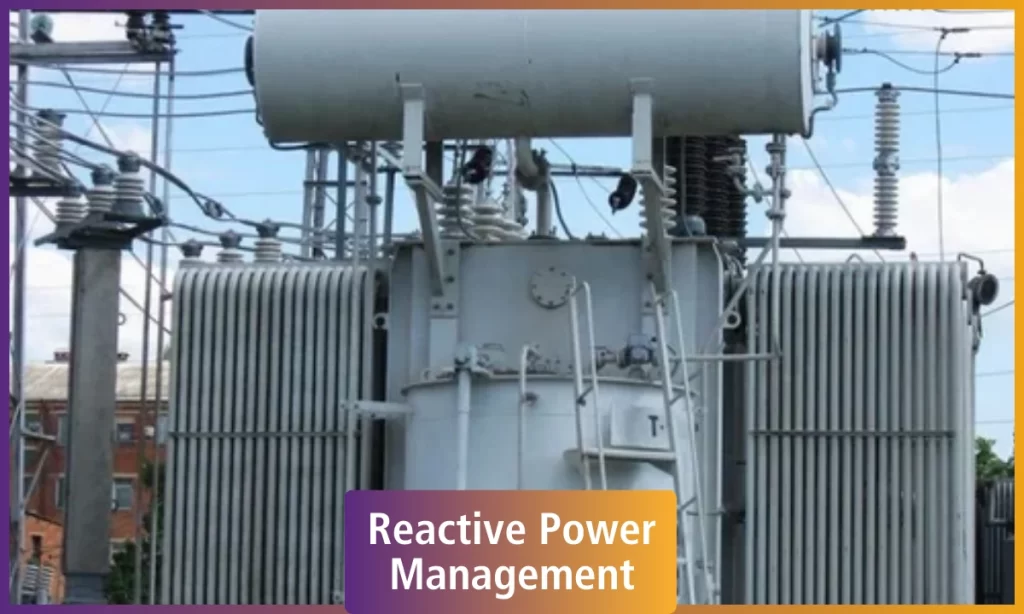Reactive power, an essential component of the electrical system, ensures electricity flows smoothly and helps maintain voltage levels. It is distinct from active power, which powers devices like lights and motors. Reactive power stabilizes the electrical grid by compensating for energy stored in magnetic and electric fields.
Proper management of reactive power is crucial for maintaining system stability. Poor management can lead to voltage fluctuations, reduced efficiency, and increased operating costs. This blog explores the challenges of reactive power management and practical strategies to ensure grid stability and efficiency.
Breaking Down Reactive Power: Inductive and Capacitive Components
Reactive power is the result of the interaction between electrical power and magnetic and electric fields generated by devices in the system. Two elements mainly influence it:
Inductive
Inductive loads are produced by equipment such as motors, transformers, and inductors. These inductive loads create a lagging power factor, where the current lags behind the voltage.
Capacitor
Capacitor loads are generated by devices like capacitors or long cable systems. These loads result in a leading power factor, where the current leads the voltage.
Balancing these two elements is essential to maintaining a stable and efficient electrical system. When the power factor deviates from its optimal level (usually close to 1), power losses increase, equipment stress rises, and electricity costs go up.
Measuring reactive power is equally important. Engineers rely on tools such as power quality analysers and advanced meters to monitor and manage the interaction between reactive and active power. These measurements enable precise adjustments to maintain power quality and ensure the system operates at maximum efficiency.
The Challenges of Managing Reactive Power
Managing reactive power is a challenging task. And there are many challenges to achieving a power system at an optimal level.
Voltage fluctuations
Reactive power plays a crucial role in maintaining voltage levels in an electrical system. Insufficient reactive power can lead to voltage sags or dips, while excessive reactive power can result in overvoltage conditions. Such fluctuations may disrupt the operation of sensitive equipment and compromise the stability and reliability of the electrical grid.
Power factor problems
Poor power factor due to unbalanced reactive power components can cause high power losses. Utilities often penalize consumers for lower power factors. This results in increased operating costs for industries and businesses.
Non-linear loads
Modern devices such as variable frequency drives (VFDs), LED lighting, and consumer electronics. Introduce non-linear loads into the system. These loads create harmonics. It makes reactive power management more complex and affects the quality of electricity.
Impact on Equipment
Poor reactive power management places additional stress on transformers, generators, and other essential equipment. Over time, this can result in overheating, accelerated wear and tear, and a significant reduction in the equipment’s operational lifespan.
If there is no effective strategy, these challenges can have a significant impact on system performance, reliability, and financial performance.
Smart Solutions for Reactive Power Management
Strategies for efficient reactive power management
Businesses and utilities have adopted various strategies and technologies to manage reactive power efficiently.
Capacitor Bank
Capacitor banks are among the simplest and most common solutions for compensating inductive loads. By supplying capacitive power to the system, they help maintain a balanced power factor and stabilize voltage levels.
Advanced control systems
Modern control systems, equipped with algorithms and sensors, allow reactive power to be monitored and managed in real-time. These systems automatically adjust reactive power levels based on current loads and grid conditions.
Smart Grid Technology
Smart grids integrate advanced communication and control technologies to enhance reactive power management. By enabling real-time data exchange between generators, substations, and consumers, smart grids improve the coordination and efficiency of the entire electrical system.
Real-time monitoring and data analysis
Devices such as power quality meters enable continuous monitoring of the power supply, allowing for early detection of issues. Data analysis supports predictive maintenance and smarter decision-making, reducing the impact of reactive power challenges.
By employing these strategies, businesses and utilities can improve system performance, reduce power losses, and ensure a more reliable power supply.
Q Sine Energy: Your Partner in Power System Optimizatio
At Q Sine Energy, we offer expert solutions to simplify and optimize reactive power management for industries and businesses. Our services include deploying RTPFC, Hybrid Filters, SVG, Active Harmonic Filters, and real-time monitoring to ensure voltage stability and efficient power flow.
By addressing challenges like power factor correction and voltage fluctuations, Q Sine Energy helps clients reduce power costs, improve system reliability, and extend the lifespan of equipment. With our innovative and client-focused approach, we enable businesses to maintain efficient and stable power systems, ready to meet future challenges.
Choose Q Sine Energy as your partner in power system optimization and experience the benefits of smarter, more reliable power management.

